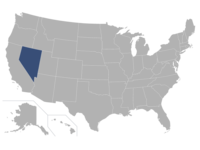Some Nevada households paying a fifth of their income – or more – on child care, report says

The average household in Clark County spent nearly 20% of their income on rising costs of infant and toddler child care, according to a new report from the U.S. Department of Labor.
The Women’s Bureau within the department issued a report in January that based findings from the National Database of Childcare Prices.
The Department of Labor’s breakdown of child care prices includes all counties except Esmeralda and Lincoln.
The annual median price for child care in Clark County in 2022 was an estimated $14,448, which increased from $12,972 in 2018.
Families on average pay 19.5% of their income toward infant care and 19.4% toward toddler care.
The amount is based on an annual median household income of $66,968.
Washoe County households, with a higher annual median income of $75,054, paid about 17.5% of their median income toward child care for infants and toddlers. The estimated cost of care in 2022 was $14,625.
On the opposite end of the spectrum, households in Lander County pay 4.5% of their income toward child care that cost an estimated $5,166 in 2022. The median income is $103,390.
The Labor Department report issued this month based its findings on the National Database of Childcare Prices.
The lack of affordable child care is common across the nation, and Nevada is no different. Data from 2018 showed that 72% of children in the state live in a child care desert.
In the State of Babies Yearbook: 2022 report published by the national nonprofit ZERO TO THREE, researchers noted that 4 out of 10 infants in Nevada live in households that make less than double the federal poverty line, which is about $52,400 for a family of four in 2020.
The Build Back Better act, legislation proposed by the Biden Administration that would have invested nearly $2 trillion over 10 years to expand the social safety net, sought to limit child care costs to no more than 7% of a household’s income.
The legislation passed the House in November 2021 in a party line vote and then died in the Senate.
As a result, action to address gaps in child care affordability continues to be left primarily up to the states.
In 2022, Nevada, with federal assistance, launched efforts to address gaps in the child care system by launching a resource center, a one-stop hub for future and current child care providers, as well as parents and guardians, and directing $50 million to expand child care subsidies.








